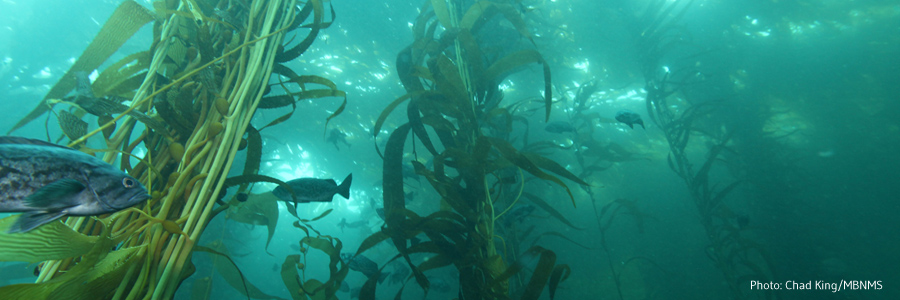California MPAs Baseline Monitoring:
At or near the time of MPA implementation in each of the MPA regions, California launched Phase 1: regional baseline monitoring. The purpose of baseline monitoring is to establish a benchmark or characterization of ocean conditions and human activities, inside and outside MPAs, against which future changes can be measured. This benchmark, combined with long-term monitoring, will provide California the information needed to better understand conditions and trends of marine species, habitats, and ecosystems inside and outside MPAs. This is a critical step in informing adaptive management of the MPA network to meet the goals of the Marine Life Protection Act. The benchmark will also provide an opportunity to inform fisheries management and to learn about the effects of climate change and pollution on California’s coastal ecosystems so managers can adapt resource management strategies accordingly.
California MPAs Long-Term Monitoring:
Phase 2 of implementation involves statewide long-term monitoring. Long-term monitoring of California’s MPAs reflects current State priorities and management needs, and builds on the knowledge, capacity, and unique considerations developed for each region during Phase 1 (regional baseline monitoring). The Statewide MPA Monitoring Action Plan informs next steps for long-term monitoring by compiling work to date, as well as incorporating novel, quantitative, and expert informed approaches. The Action Plan prioritizes key measures and metrics, habitats, sites, species, human uses, and management questions to target for long-term monitoring and aid in the evaluation of the Network in meeting the goals of the MLPA. For more information, click here.
Framework to Guide MPA Monitoring: http://oceanspaces.org/sites/default/files/regions/files/monitoring_framework.pdf
California Coastal Monitoring Dashboard: Use this interactive dashboard to explore who’s monitoring what, where along the California coast from Point Arena to the US-Mexico border. Data in the dashboard come from the results of the North Central, Central, and South Coast Monitoring Surveys.
Ocean Spaces MPA Monitoring: An inclusive online community built upon a foundation of rigorous scientific knowledge about the health of California ocean ecosystems and current ocean resource management initiatives. Ocean Spaces hosts a data archive, with all data collected by organizations participating in official state-funded MPA monitoring.
MPA Monitoring Data Catalog: Ocean Spaces MPA monitoring data archive. All data is freely accessible by the public.
Marine Applied Research and Exploration: Partnering with state agencies and academic institutions, MARE has been conducting baseline and long-term monitoring surveys of the deep subtidal portions of California’s MPAs since 2003. Learn more about their work here.
